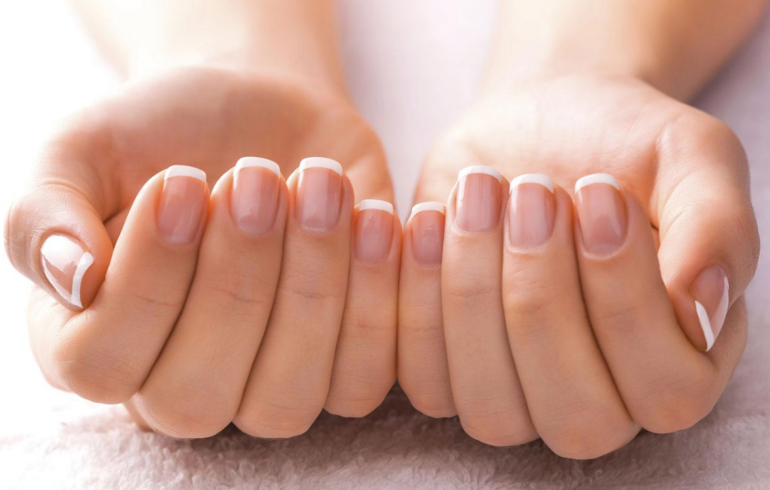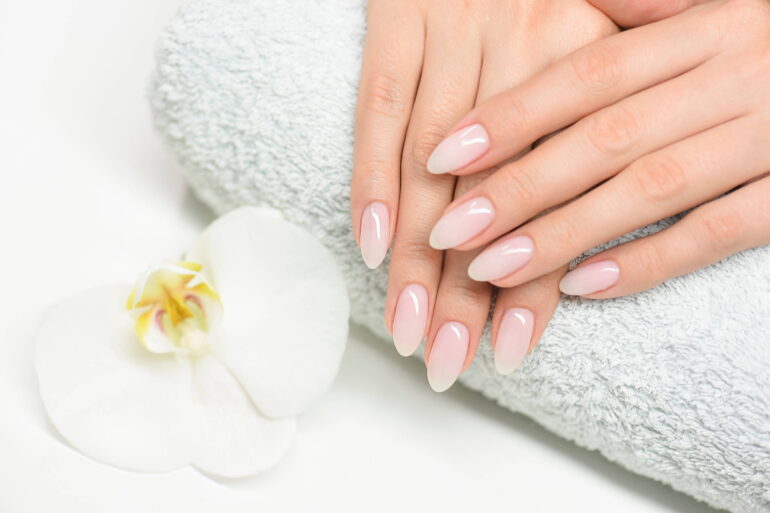Nail growth is a complex process that involves the interaction of various biological and environmental factors so it also affects each person’s manicure. Nails are made up of a tough protein called keratin, which also makes up hair and the outer layer of skin.
While each person’s nail growth is unique, on average, fingernails grow about 3.5 millimeters per month, while toenails grow about 1.6 millimeters per month. In this article, we will explore the science behind nail growth and the various factors that can affect it.
The Anatomy of Nails

Before diving into the science of nail growth, it’s essential to understand the anatomy of nails. Nails are composed of several layers, including the nail plate, nail bed, nail matrix, and cuticle. The nail plate is the visible part of the nail that we typically see, while the nail bed is the skin underneath the nail plate.
The nail matrix is the tissue at the base of the nail plate, and it’s responsible for producing new nail cells. Finally, the cuticle is a thin layer of skin that covers the base of the nail plate, protecting it from infection.
The Science Behind Nail Growth
This is a continuous process that occurs as a result of the production of new nail cells in the nail matrix. The nail matrix is a small, well-protected structure located at the base of the nail. The matrix is responsible for producing the cells that make up the nail plate, which is the hard, visible part of the nail.
As new nail cells proliferate in the matrix, the older cells are pushed forward, causing the nail to grow. The formation of keratin fibers causes the nail plate to become harder and more rigid as it progresses. These fibers are densely packed, lending strength and durability to the nail.
Factors That Affect Nail Growth

Several factors can affect nail growth, including genetics, age, nutrition, and overall health. Let’s explore each of these factors in more detail.
- Genetics: Genetics play a significant role in nail growth. Some people naturally have faster-growing nails than others, while others may have nails that are prone to breaking or splitting. Genetics can also influence the thickness and texture of nails.
- Age: As we get older, our nails grow slower. In general, nails grow faster in children and adolescents than in adults. Older adults may also experience changes in nail texture, thickness, and shape.
- Nutrition: The health of our nails is closely linked to our overall nutrition. A diet that is rich in vitamins, minerals, and protein is essential for healthy nail growth. Some nutrients that are particularly important for nail health include biotin, vitamin D, iron, and zinc.
- Health: Our overall health can also affect nail growth. Certain medical conditions, such as thyroid disease, anemia, and diabetes, can impact nail growth and health. Additionally, medications like chemotherapy can cause nail problems such as slow growth, brittleness, and discoloration.
- Environmental Factors: Environmental factors such as exposure to water, chemicals, and trauma can also affect nail growth. For example, repeated exposure to water can cause the nails to become soft and weak, while exposure to harsh chemicals can cause the nails to become brittle and prone to breaking.
- Trauma, such as hitting the nail or constantly tapping on a keyboard, can also cause the nail to become damaged and grow more slowly.
The Myth of Nail Growth After Death

One common myth about nails is that they continue to grow after death. While this idea may seem plausible, it’s not actually true. After death, the body’s metabolic processes stop, which means that the nail matrix is no longer producing new cells.
As a result, the nails do not continue to grow after death. However, the skin and tissues around the nails can shrink, which may create the illusion that the nails have grown.
How to Promote Healthy Nail Growth
If you want to promote healthy nail growth, there are several things you can do. First, make sure you are eating a balanced diet that includes plenty of vitamins, minerals, and protein. You can also take supplements like biotin or collagen to support nail health.
Additionally, be sure to take care of your nails by keeping them clean and dry, avoiding harsh chemicals, and wearing gloves when doing activities that could damage the nails.
In terms of nail care, it’s also essential to keep the nails trimmed and filed to prevent breakage and splitting. When filing the nails, be sure to file in one direction rather than back and forth, which can cause the nails to weaken and split. Finally, avoid biting or picking at your nails, as this can cause damage and slow down nail growth.

In conclusion, nail growth is a complex process that involves a combination of biological and environmental factors. While the average rate of nail growth is around 3.5 millimeters per month for fingernails and 1.6 millimeters per month for toenails, individual factors such as genetics, age, nutrition, health, and environmental factors can all affect nail growth.
By understanding the science behind nail growth and taking care of your nails, you can promote healthy nail growth and keep your nails looking and feeling their best. Founder Khoan Quang Vinh said: “Do not hesitate to visit our website https://maby.us to be able to enjoy great services at your nearest nail salon”.
